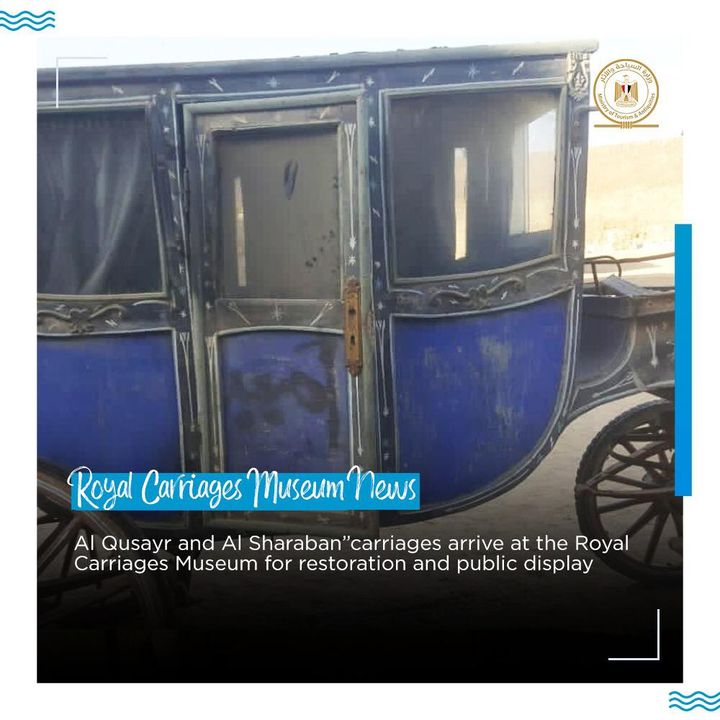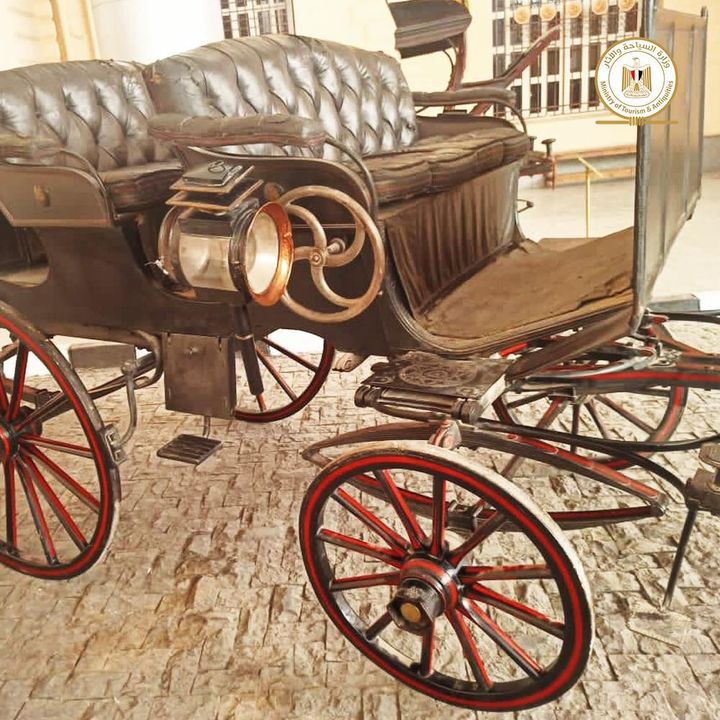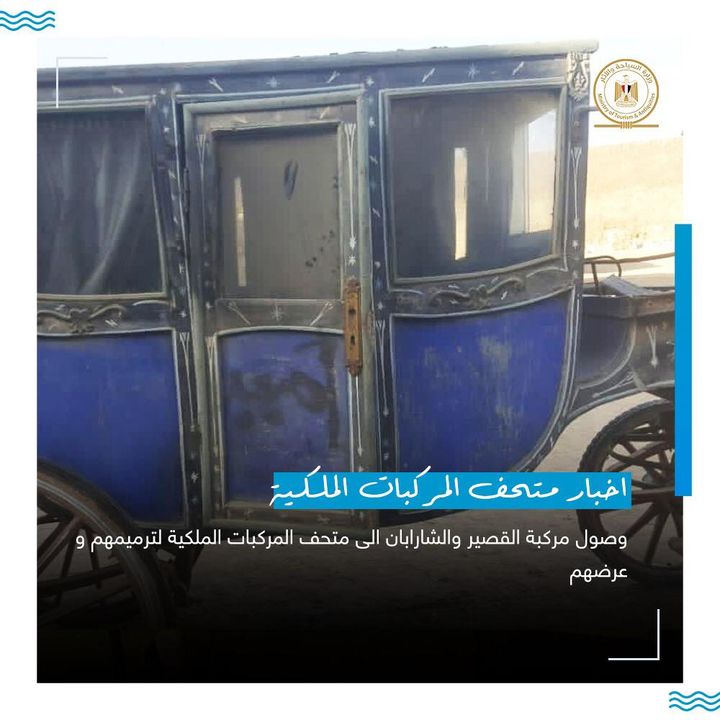-ترميم عربة الشارابان الفريدة من نوعها وعرضها بالمتحف
استقبل متحف المركبات الملكية ببولاق اليوم عربة حنطور ترجع لعصر الخديوي عباس حلمي الثاني، والتي كانت موجودة في قلعة القصير بالبحر الأحمر كحرز علي ذمة القضية رقم 1949 لسنة 2008 بعد أن تم ضبطها اثناء محاولة تهريبها خارج البلاد من ميناء سفاجا البري.
صرح بذلك مؤمن عثمان رئيس قطاع المتاحف بالمجلس الأعلى للآثار ، موضحا أنه عند صدور قرار النيابة العامة من إدارة شرطة ميناء سفاجا، بتسليم الحرز (العربة) إلى المجلس الأعلى للآثار خلال الاسابيع القليلة الماضية، قام علي الفور أثري و مرممي المجلس الاعلي للاثار باتخاذ كافة الاجراءات القانونية اللازمة لاستلام العربة، و تسجيلها ضمن المقتنيات الأثرية ونقلها إلى متحف المركبات الملكية ببولاق حتى يتم ترميمها وعرضها.
و أكد مؤمن عثمان أنه تم عمل تقرير مفصل عن حالة حفظ العربة بصورة دقيقة، وقام فريق المرممين بأعمال التوثيق و الترميم المبدئ لها، وان عملية التغليف والنقل تمت على أعلى قدر من الكفاءة وطبقا للمعايير العلمية و التقنية المتبعة في تغليف ونقل الآثار، مشيرا إلى انه خلال الفترة القادمة سوق يعكف فريق من المرممين بمتحف المركبات لتوثيق وإعداد خطة لترميمها تمهيدا لعرضها في قاعة العرض المتغير.
واشار د. أحمد الصباغ مدير عام متحف المركبات الملكية إلى أن العربة من نوع الآي وترجع لعصر الخديوي عباس حلمي الثاني وبالتحديد لعام ١٨٩٢م ويبلغ طولها ٣,٥ متر وعرضها ١.٥ متر وهي محمولة على أربع عجلات من الخشب والجلد وتتكون من مقصورة من النحاس الأصفر والخشب مكسوة بالجلد لها بابين جانبيين بداخلها مقعدين متواجهين وتقدم المقصورة مقعد للسائق وخلف المقصورة كرسي للحراس وعلى جوانب المقصورة الاربعة يوجد أربعة فوانيس نحاسية للإضاءة وجرس نحاسي.
و قال احمد الصباغ ان مرممي المتحف قاموا أيضا بترميم عربة الشارابان الفريدة من نوعها ذات اللون الأسود بمستريك أحمر، ووضعها في العرض المتحفي بقاعة الاحتفالات بالمتحف، مؤكدا ان هذة العربة ليس لها شبيه بالعربات المعروضة بالمتحف، فهي عربة مكشوفة ترجع إلى عهد الخديوي اسماعيل حيث كانت تستخدم في الرحلات. و أهم ما يميزها ان لها ثلاثة مقاعد
متتالية بعرض العربة .
The “Qusayr” Carriage arrives at the Royal Carriage Museum for restoration and display
The unique “Sharapan” Carriage will be restored and displayed in the museum
Today, the Royal Carriages Museum in Bulaq received a carriage dating back to the era of Khedive Abbas Helmy II, which was in the Qusayr castle in the Red Sea. It was placed there after it was seized in 2008 during an attempt of smuggling it outside the country from the land port of Safaga.
Moamen Othman, head of the museums sector at the Supreme Council of Antiquities, explained that when the Public Prosecution issued a decree from the Safaga Port Police Department, to hand over the cart to the Supreme Council of Antiquities during the past few weeks, archaeologists and restorers of the Supreme Council of Antiquities immediately took the necessary measures. All legal actions for receiving the vehicle were taken. as well as registering it among the archaeological collections. It was then transported to the Royal Carriages Museum in Bulaq to be it is restored and displayed.
Moamen Othman confirmed that a detailed report was made on the state of of the carriage, and the restoration team did the documentation and initial restoration work, and that the packaging and transport process was carried out at the highest level of efficiency and in accordance with the scientific and technical standards used in the packaging and transportation of antiquities. He indicated that a team of restorers at the Royal Carriages Museum is working to document and prepare a plan for its restoration to display it in the temporary exhibition gallery.
Dr. Ahmed Al-Sabbagh, Director General of the Royal Carriages Museum, stated that the carriage is an “Alay” and dates back to the era of Khedive Abbas Helmy II, specifically the year 1892 AD. It is 3.5 meters long and 1.5 meters wide and is carried on four wooden wheels, leather and consists of a cabin of brass and wood clad with leather. It has two side doors, with two seats facing each other, the cabin has a seat for the driver, and behind the cabin a chair for the guards, and on the four sides of the cabin there are four copper lanterns for lighting and a copper bell.
He added that the museum’s restorers also restored the unique black-colored Sharapan carriage, and is put in the museum display at the museum’s celebration gallery. He said that this carriage was different, as it is an open car dating back to the era of Khedive Ismail, and was used in excursions. The most important thing that distinguishes it is that it has three consecutive seats across the width of it.


